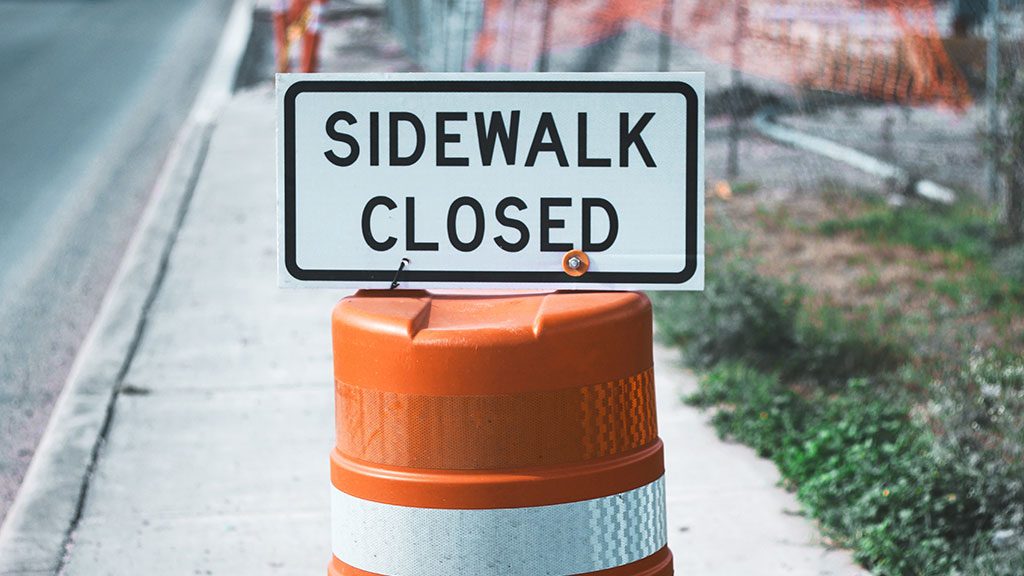Who carries the flag for the best interests of traffic control persons (TCP) in British Columbia?
In November 2017, Curtis Williams, general manager and director of corporate health and safety at the Ansan Group of Companies, stepped down as executive director of the BC Flagging Association (BCFA).
The association is one of several organizations that aims to represent the interests of TCP in B.C.
“In the past, the BCFA was a loosely formed, small group of traffic control people who were very vocal about their industry,” said Williams. “Unfortunately, they were more representative of themselves and their own opinions than the industry as a whole. They had no structure or plan to increase their membership. It was all done through a closed-group Facebook page.”
Williams said he recognized this disorganization and, in the summer of 2017, began to put in place the structure to increase the BCFA’s membership and promote its goals.
But the project came to a sudden halt when Williams decided traffic control management, which he represents, should not be championing the cause of the workers.
“It’s something they need to do themselves,” he said. “They’re the ones out there doing the work and are better aware of the problems facing their industry. Employers and employees should be in separate organizations, because, although their interests overlap, they are not the same.”
One of those workers is Diane Herback.
Herback, who has been a flagger in the Lower Mainland for 30 years, said she formed the BC Flagging Association for Traffic Control People (BCFATCP) about 10 years ago.
“The purpose of the association, when it was formed, was to get the traffic laws changed, increase the penalties for driver infractions in the cone zone and increase public awareness of the dangers to roadside workers,” said Herback.
She is not as active in the TCP movement as she once was, she said.
“I find the work around the association overwhelming sometimes.”
However, in 2018 Herback said she plans to push the B.C. government to double the fines for driving infractions in the cone zone.
She is not the only person who claims parentage of the BCFATCP.
Tammy Sampson, who is director of operations at BCRS Road Safe Inc., said she and Herback were co-founders of the organization.
The origins of the BCFATCP go back to 2009, after an incident that injured a B.C. flagger, said Sampson.
“It started as a Facebook group,” she said. “Its purpose was to raise the awareness in the general public of the dangers to flaggers and to be advocates for them.”
Its most widely remembered action was organizing a rally on Highway One outside Vancouver, near the busy Port Mann Bridge.
“We created the awareness we were looking for, because we were prepared to take extreme measures,” said Sampson.
Like Sampson, most flaggers are very concerned about their working conditions.
For example, the newly-formed Traffic Control Specialists’ Network is holding a Day of Mourning for Roadside Workers on April 28 at the Armstrong IPE Rodeo Grounds in Armstrong, B.C.
Companion events in Kelowna and Victoria are in the planning stage.
In addition to being dangerous, the lot of the TCP is a humble one.
“It’s a difficult job and requires a great many skills that aren’t adequately appreciated,” said Sarina Hanschke, a TCP quality assurance specialist for the BC Construction Safety Alliance.
“Most flaggers are women working in a man’s industry, and some people in the construction industry perceive it to be a menial occupation.”
As a result, there is a very high dropout rate in TCP employment.
TCP deserve an organization that represents them effectively, said Stan Weismiller, vice-president of Mainland Sand and Gravel ULC dba Winvan Paving.
Weismiller said Winvan employs its own flaggers and contracts with TCP suppliers to supplement its own resources.
“Currently, the flagging association is a fledgling organization that does not have a credible presence with any of the construction industry associations that our business associates with,” said Weismiller.
He said the association needs to become professionally operated if it is to effectively represent TCP and their employers on issues with the road users, regulators, highway and roadway owners, the public and other stakeholders who control the TCP work environment.
“Issues raised by TCP and their employers need to be focused and supported with facts and not personal opinions flowing from anecdotal stories or emotional events,” Weismiller said.










Recent Comments
comments for this post are closed